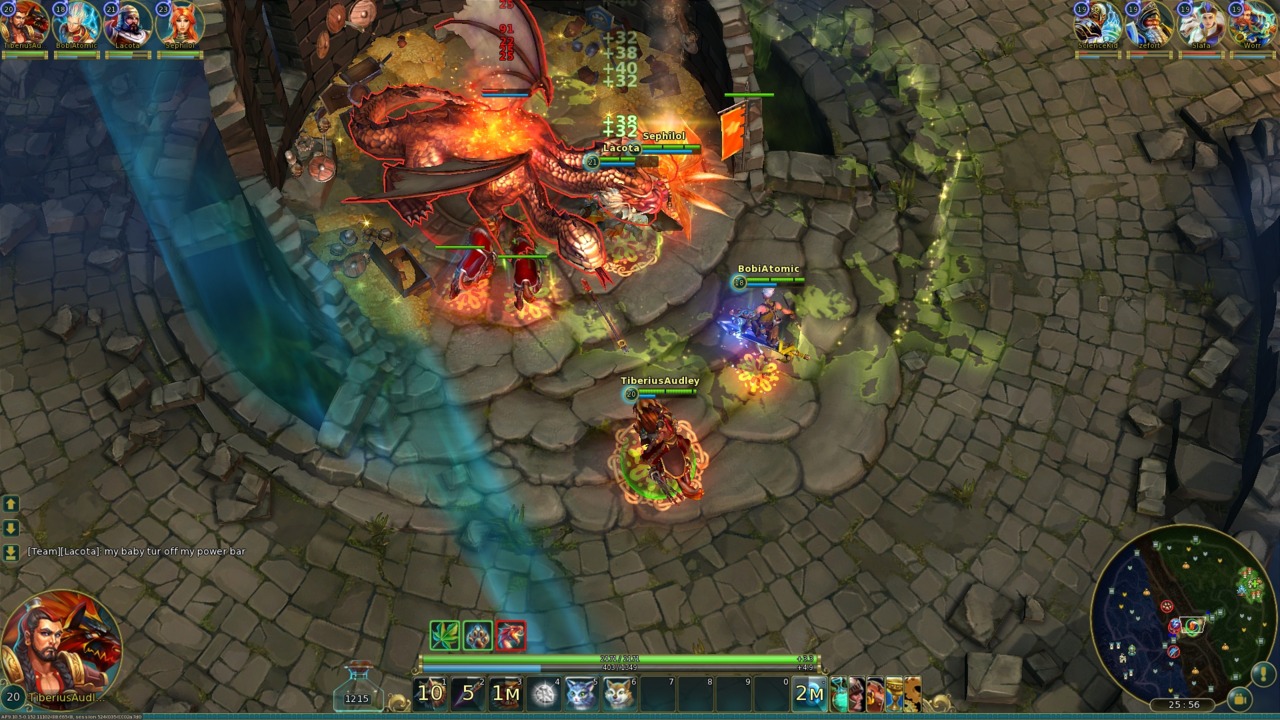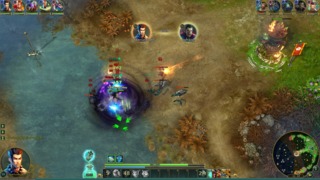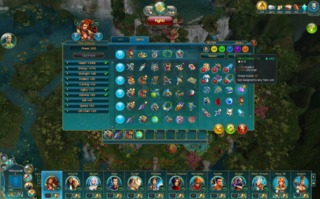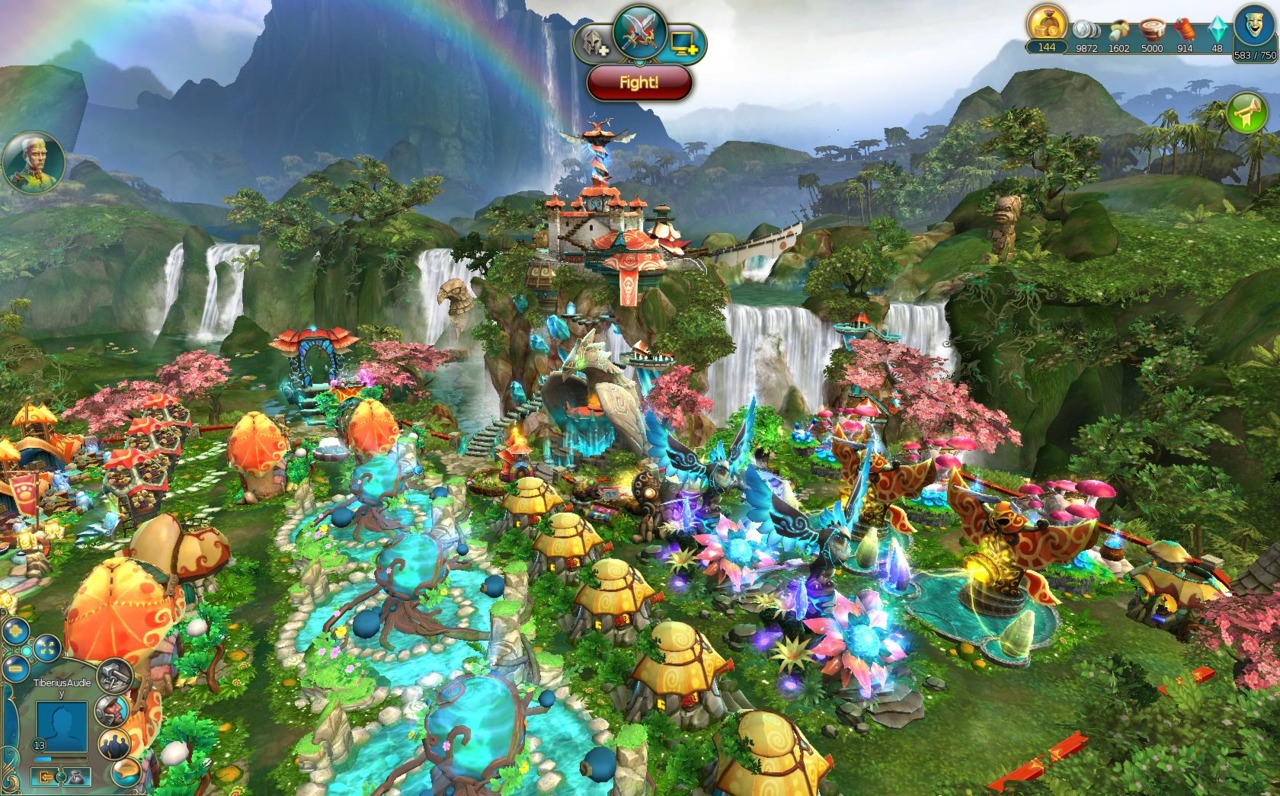Prime World brings a change of pace to a genre where imitation and outright copying has become the norm. Unfortunately, in all its efforts to add new gameplay modes focused on diverse mechanics not typically covered by the standard three-lane map, it fails to capture the thrills of similar games that make it difficult to pull away. The game could be likened to a grand steak dinner for which chef forgot to season the slab of meat.
In stark contrast to other games of the genre, Prime World asks you to choose the team you wish to play for. Permanently. On one side are the Imperium, an empire of steampunkesque citizens using a resource known as prime to empower technology. On the other side are the Keepers, focused more on using prime as a source of magic. Both sides are functionally the same, with the primary in-game difference being the appearance of the heroes, such as characterizing the starting character as either flying on a machine hoverboard, or a floating magical sword. It's a choice between cold stone and mathematical machinery versus the art, beauty, and grace of nature and magic.

When you first start up the game, you're greeted by the cloying voice of your empire-specific adviser. If you manage to make it through the dialogue without spamming the "next" button to silence the incessantly overacted lines, you learn a bit of backstory before you're sent into the first tutorial battle, where the talkative heroes compete to see whose whining voice can rattle your nerves the fastest. It's nice that the game leads new players through the basics, but if you're a genre veteran, it's frustrating to be forced to go through motions you already know. Nonetheless, it's best to pay some attention to the details: Talents in Prime World replace both items and skills of other MOBAs. Active talents make up the core character-defining skills, such as the Wolf Dancer's ability to summon a pet wolf, or the Rumbler's ability to turn into an immovable object, while most passives are simple stat boosts.

In your quest to unlock new heroes and talents, you must tinker with castles, which are a game within the game. Here, you construct resource-gathering buildings with different time periods for a harvest that must be started again upon completion, allowing you to choose shorter durations for more resources over time, or longer durations if you intend to step away from the game for a while. Building up the castle is little more than a chore that detracts from the gameplay itself. It quickly becomes a mindlessly repetitive task that serves the purpose of giving you something to do during queue times. Having something to do while queuing is indeed welcome, though, because the game is somewhat underpopulated at the moment. Queue times are lengthy, and although the launch onto Steam helped alleviate the search times during prime time, queuing during oddball hours is still a painful task that may discourage even the most patient players.
When it comes to the standard Borderlands map, which does its best to mimic Defense of the Ancients while offering its own special flair, Prime World is underwhelming. The heroes, abilities, and battles are bland and lack panache, and the dull spell effects take the joy out of unleashing magic onto the battlefield. Visual and audio cues miss the opportunity to draw you in. Rather than engaging in epic skirmishes for control of prime and brawls over towers of the close-minded Dokht Imperium, I found myself merely going through the motions of repetitiously clicking on enemy heroes until the enemy base or my own fell. The strategic value of the capturable flags that line each lane to create "native land," which may empower certain spells, is overplayed by the game's tutorial, and only rarely leads to a significant momentum shift.
Long cooldowns on abilities make fights drag on as tedious right-click fests
Prime World's most successful innovation is its cycle of additional game modes that rotate each hour. One such mode, Dragonwald, is a unique experience. Instead of slaying and sieging one another, Dragonwald players enter a maze of monsters and race to clear it faster than the opposition. The race through the labyrinth culminates in a boss fight against Prime World's iconic three-headed Dragon. Once the dragon is slain, you can't just pull a Daedylus and fly your way out of the labyrinth, however. Instead, you must press deeper, braving the opponent's side of the map as an AI-controlled minion carries the Dragon's egg to an enemy altar. This total shift from killing your opponents to murdering monsters, and the rising thrills as you delve further into the perilous depths, entices you to return to Dragonwald as often as possible. In fact, when the map's queue is not available, you may find yourself asking "When's Dragonwald?" rather often.

The other cycling modes change the pace as well. On the Apocalypse map, slain minions reanimate temporarily as undead, and heroes as beasts of the apocalypse, both of whom fight for the side that slew them. This twist keeps the battle fast and furious, as it is much easier to topple towers when your army's size has been nearly doubled by a force of undead soldiers. Native Lands and Switcheroo also modify the standard Borderlands map, but in more subtle ways that do little to evoke additional excitement. In Outpost, however, the three lanes are trimmed to a single lane in a 3v3 match-up where enormous siege engines control your fate. These siege engines can rapidly raze buildings if they aren't stopped, and with such little territory to maneuver around to escape or engage the enemy heroes, battles are a non-stop melee of action with little time to breathe or even blink.
Talent customization is one of Prime Worlds finer aspects. Every battle yields resources and new talents for you to consider equipping to your heroes. Talents are assigned rarity values and can also be upgraded by sacrificing superfluous or weak talents to add marginal buffs to those you wish to keep. There's a frontier's worth of unexplored talent setups for each hero, and finding that perfect setup with talents upgraded just so could require retiring into hermitage, but if you enjoy the game, tweaking talents could keep you engaged in the long term.

Nothing about Prime World feels "wrong," but at the same time, it still misses the mark. With all the additional features that expand Prime World beyond traditional genre definitions, the game lacks the heart and focus needed to keep you invested in each match. The underwhelming visuals and skill design don't make for any clutch or epic plays, and long cooldowns on abilities make fights drag on as tedious right-click fests. Once Prime World's novelty wears off, there's little to keep you coming back for more.